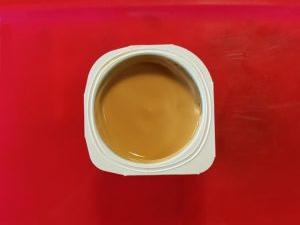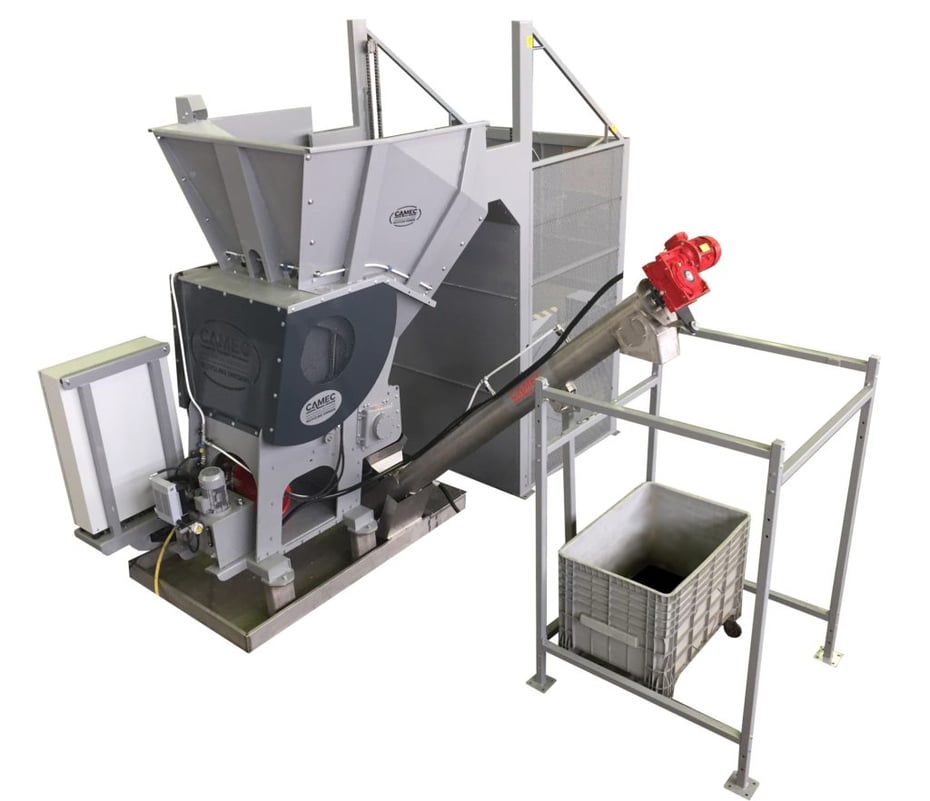Look at the video showing CAMEC Plant for the Industrial Recovery of Youghurt Cups: CAMEC Yoghurt Cups Plant with GRR280 Shredder – YouTube
Yogurt is a food that many of us enjoy on a daily basis. Consequently, the cup that contains it has become a real daily waste which, however, is often thrown quickly and erroneously away in the unsorted waste garbage bin.
A jar of yogurt, as well as the transparent snack packs, the tubs and bags of the ready salad, the citrus fruit nets and many other food containers, are packaging that store, protect and transport a food from the producer to the consumer.
 Everyone knows that the yogurt cups, as well as all the main types of food packaging in the various plastic types, must be given to the SEPARATE COLLECTION OF PLASTIC, but how many people do it really and consistently, and are fully aware of the value of this gesture, that, although it seems banal, includes many implications?
Everyone knows that the yogurt cups, as well as all the main types of food packaging in the various plastic types, must be given to the SEPARATE COLLECTION OF PLASTIC, but how many people do it really and consistently, and are fully aware of the value of this gesture, that, although it seems banal, includes many implications?
By reserving the right destination for each of the packaging that contains the products we consume on a daily basis, we not only do our part as responsible citizens, but we guarantee the correct recovery path for what is commonly defined as “waste”.
Our yogurt cup, together with many other plastic packs, if properly delivered, can be taken to waste sorting and collection centers, starting a process of volumetric reduction, separation from other fractions and impurities, recycling and reuse as a secondary raw material.
Otherwise, if we throw the jar in the garbage can we could contribute to polluting our planet for many years because the plastic material disposed of in landfills or abandoned in the environment or in the sea, where it takes centuries to naturally degrade, causes significant pollution.
In Italy there are countless plants that deal with transforming plastic into flakes and granules, to then melt them and re-enter them in the molding plants to then recreate new objects, often even more resistant and lasting.
Even the food companies of packaged products are increasingly equipping themselves internally for the recovery of the various types of packaging plastic used for their products. When a product remains unsold it is in fact withdrawn by the manufacturer and sent for disposal.
The most common plastics on the consumer product market are:
· Polyethylene (PE): bags, bottles for detergents, toys, films and other packaging;
· Polypropylene (PP): objects for furniture, food containers, bottles for detergents and detergents, carpets, garden furniture;
· Polyvinyl chloride (PVC): egg trays, films, tubes; it is also in the doors, in the windows, in the tiles;
· Polyethylene terephthalate (PET): beverage bottles, synthetic fibers, cassette tapes;
· Polystyrene, also called polystyrene (PS): food trays, cutlery, plates, glasses
The separate collection of plastics concerns in particular packaging, which constitutes a significant percentage of the plastic contained in urban waste (over 50%).
Let’s take a few more seconds to throw our yogurt cup in the right place. We will make our contribution so that this can take on new life: we do good to ourselves, to others, to our planet!
“𝙉𝙤𝙩 𝙖𝙡𝙡 𝙤𝙛 𝙪𝙨 𝙘𝙖𝙣 𝙙𝙤 𝙜𝙧𝙚𝙖𝙩 𝙩𝙝𝙞𝙣𝙜𝙨; 𝙗𝙪𝙩 𝙬𝙚 𝙘𝙖𝙣 𝙙𝙤 𝙨𝙢𝙖𝙡𝙡 𝙩𝙝𝙞𝙣𝙜𝙨 𝙬𝙞𝙩𝙝 𝙜𝙧𝙚𝙖𝙩 𝙡𝙤𝙫𝙚.” M. Theresa

